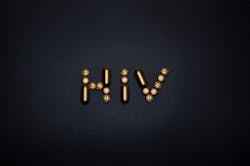The Centers for Disease Control and Prevention (CDC) has issued a health advisory on HIV clusters and outbreaks, noting that these increases in HIV cases are occurring predominantly among people who inject drugs (PWID), stalling long-term declines in HIV rates, according to a press release.
Although HIV incidence among people who inject drugs declined substantially over many years, the ongoing misuse of opioids and other frequently injected substances are threatening this HIV prevention success, the CDC said. The HIV diagnoses among people who inject drugs increased by 11 percent nationally from 2016 to 2018, with more pronounced increases among adults less than 40 years of age and non-Hispanic White adults, the CDC said.
Following a 2015 outbreak in Scott County, IN, increases in HIV among people who inject drugs, including several clusters and outbreaks of various sizes, have occurred across the United States in counties that span the rural-urban spectrum, the CDC said. People involved in such clusters and outbreaks frequently shared common characteristics: nonsterile injections multiple times per day; use of multiple substances (often opioids with methamphetamine or cocaine); marginalizing circumstances (homelessness or unstable housing, recent incarceration, and the exchange of sex for money or goods); and coinfection with hepatitis B virus (HBV), hepatitis C virus (HCV) and sexually transmitted infections (STIs), the CDC said.
To help health departments and providers address increases in HIV infections, the CDC published an article in The Journal of Infectious Diseases that synthesizes experiences and lessons learned from responses to six large HIV outbreaks among people who inject drugs. The agency also posted recommendations for clinicians and public health departments on its website.
The outbreaks discussed in the article occurred in communities with varying levels of capacity to serve people who inject drugs; all offered some level of harm reduction services, including syringe services programs. Yet as part of outbreak response, health departments identified gaps in the delivery of harm reduction (e.g., limited access to syringe service programs and sterile injection equipment) and other services, highlighting the challenges of engaging a significantly marginalized population, the CDC said.

